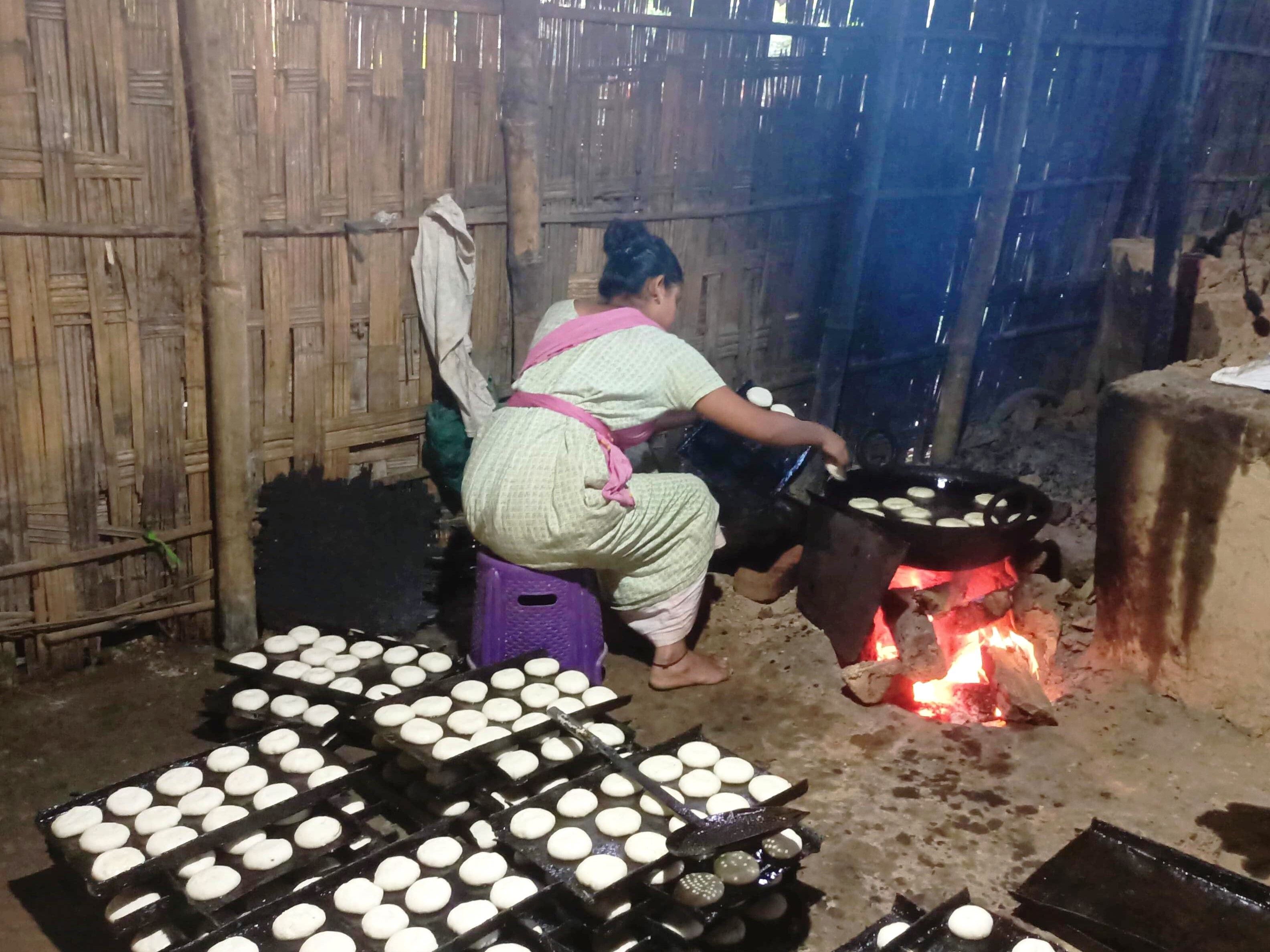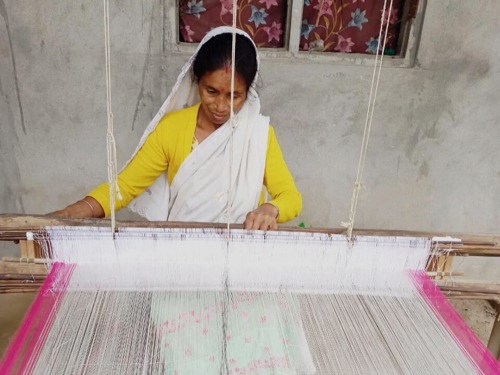Weaving a way to brighter, safer future

Ranjitha Begum making sweet buns. Credit - Aaranyak.
Promoting coexistence in human-elephant conflict hotspots of Northeast India.
Jogeshwari Dulakakhoriya is a petite, grey-haired widow in her 70s. She lives with her son and daughter-in-law in Haldhibari, one of several villages on the world’s largest river island, Majuli. Covering 350km2 in the Assamese stretch of the Brahmaputra River, Majuli is home to more than 170,000 people and around 100 Asian elephants.
When I first met Jogeshwari two years ago, she was noticeably subdued. In fact, her whole village felt subdued. Its residents are mostly subsistence farmers growing the crops they live on. But with elephants regularly foraging their fields, many families ate only one meal a day. During the harvest season, they lived in constant fear of losing their lives and livelihoods to elephants.
This year, when I returned to Haldhibari, Jogeshwari greeted me with a smile as wide as her out-stretched arms. “Come in, come in,” she urged, “come and see what I’ve been doing.” An altogether different woman, she was now a force of nature. Why?
Because, last year, with 5 kg of yarn she received from this project, she wove cloth that she sold for 6,600 Indian rupees (£66). She then bought more yarn for more cloth along with two small goats from which she will breed more goats. Even more thrilling for Jogeshwari, this entrepreneurial investment afforded her a bus ticket to the next district to visit a beloved cousin she had not seen for 50 years because the fare was beyond her. On the way, she saw her first train. The memory still makes her fizz with joy.

Weaving is a traditional female practice in Assam, taught by mothers and grandmothers. Jogeshwari is the oldest of 288 women who opted to use this skill under this project to make extra money for their families.
Jogeshwari’s neighbour Manjuri Gayon, a mother of two, joined the project to weave a future for her children. So far, she has been able to pay her daughter’s college fee (an impossibility two years ago), and she has money left to buy books. More recently, she established a winter vegetable garden behind her house, selling produce every day to other villagers and re-investing her earnings by buying more yarn.
Nirupol Sonowal, a widow from Kamargoan village, also chose to weave her way out of poverty. In the past, she wove infrequently because money for yarn was scarce. With yarn given to her by Aaranyak, the Assam-based implementing partner of this project, she wove gamosas, the much-valued traditional Assamese scarves. After selling her handworks locally, she bought another 9 kg of yarn which, in turn, earned her 18,610 rupees (£186) in just 6 months. She now weaves throughout the year, and is designing new patterns for her borders, incorporating wild animals as well as the customary flowers.
The aim of this project is to alleviate human-elephant conflict (HEC) in northeast India to facilitate coexistence. This far-flung region supports around 10,000 wild elephants (30-40% of the world’s surviving population). Everywhere elephants are threatened by habitat loss, infrastructure development, and conflict with people. The project currently focuses on 20 villages in the states of Assam and Meghalaya.
Aaranyak knew which villages experienced conflict with elephants, and that some families suffered more than others. So, the project design incorporated training to install seasonal solar-powered electric fencing that would not permanently fragment the landscape, and livelihood enhancement activities for the poorest families. Implementation began with communal meetings to profile the nature and scale of the problem and learn who most needed help. Aaranyak then interviewed proposed beneficiaries to understand their situation and, if they wanted to participate, what income-generating activities they would like to try.
The team also identified individuals for the key role of village champion - to coordinate community activities, support training options, and share HEC avoidance information, including project materials produced in the local language. So far, 4 of the 20 village champions are women. I have met 2 of them. Quietly confident and clearly well respected by men and women alike, they are a major asset to the project and their villages.

Though weaving is a common skill among the women of Assam, it is not the only income-generating option participants have chosen to pursue.
Putul Bharali lives in Charaguwa village just south of the Brahmaputra. Her family have been potters for years, but variable weather patterns and a shortage of clay meant new challenges. With Aaranyak’s help, she found a new source of clay and is again making pots for the local market, earning 5,000 rupees a month (£50) in the months when pottery is possible. And she is making recyclable products that are environmentally more sustainable than the plastic containers that litter landscapes worldwide.
Ranjitha Begum is a baker who has looked after her mother and a son since her husband left years ago. Her cakes and buns are popular with villagers, but her packaging was basic. With Aaranyak’s help, she bought polypropylene bags and a vacuum sealer, enabling her to double her output, package her products hygienically, and sell to hawkers who supply the market in town. She now earns 350 rupees (£3.50) a day and is immensely proud of her business. “It has made our lives so much better,” she said, “and safer.”
Safety, and food security, are the goals of every project participant whose lives were tormented by elephants. But is the project helping elephants as intended? Yes, but more slowly.
As villagers become confident that they can avoid conflict, they also become more tolerant. Jogeshwari’s family, for example, leave some of their crop for elephants to eat post-harvest as they can now afford to be generous. And thanks to the seasonal electric fencing that is effectively protecting their crops, two villages on Majuli are keen to restore the fields they no longer need for elephants. A good sign, but only time will tell if this project’s investment in crop protection and the entrepreneurial skills of women achieves true coexistence.
Written by Belinda Stewart-Cox. For more information about this Darwin Initiative Main Project 29-018, led by British Asian Trust, please click here.

 Back
Back